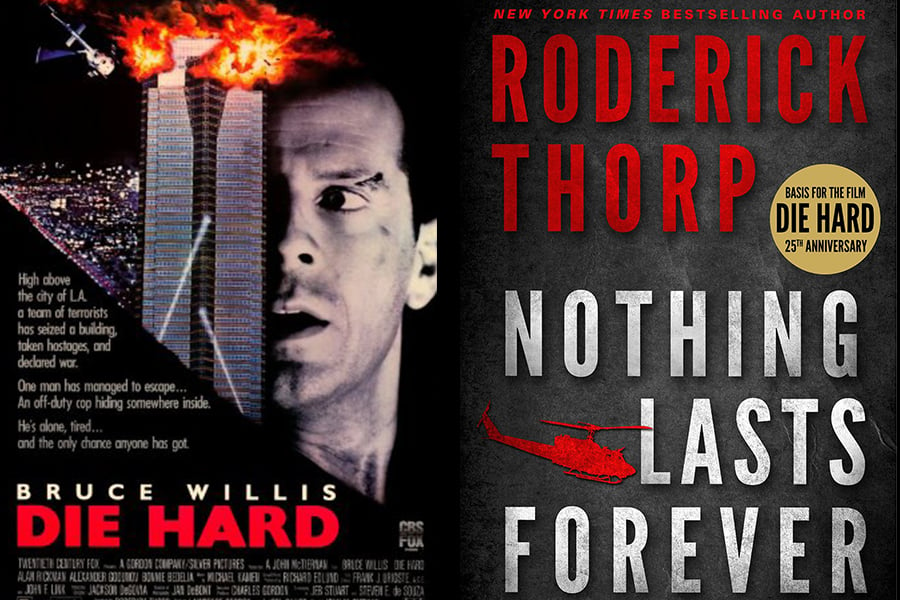Die hard was based on roderick thorp s 1979 novel nothing lasts forever a sequel to his 1966 classic the detective

Die Hard: The Surprising Origin of an Action Classic

When it comes to action movies, few can match the excitement and intensity of the iconic film, Die Hard. Released in 1988, this thrilling masterpiece has become one of the most beloved and enduring entries in the genre. However, what many viewers may not know is that Die Hard was actually inspired by Roderick Thorp’s 1979 novel, Nothing Lasts Forever, which itself is a sequel to Thorp’s 1966 classic, The Detective.

Nothing Lasts Forever introduces readers to the character of Joe Leland, a tough and relatable retired NYPD detective. Thorp’s sequel tells the gripping story of Leland’s encounter with a group of German terrorists who take over the Klaxon Oil Corporation’s corporate headquarters during a Christmas party. The stakes are raised as Leland’s daughter is among the hostages. Driven by determination and a strong sense of justice, Leland takes on the terrorists single-handedly, showcasing his unmatched skills and sheer will to survive.
Thorp’s novels captured the attention of Hollywood producers, who recognized the potential for an unforgettable on-screen adaptation. In 1987, the rights to Nothing Lasts Forever were acquired by renowned producer Joel Silver, who then embarked on the task of transforming the story into a thrilling blockbuster. Little did anyone know at the time that this film would forever redefine the action movie genre.
Silver’s vision brought together the talents of director John McTiernan and screenwriter Jeb Stuart. Their collaboration resulted in the birth of one of cinema’s greatest action heroes: John McClane, effectively portrayed by Bruce Willis.
Die Hard’s transition from page to screen demanded a few changes to the original story and characters. To make the story more relatable to wider audiences, Leland’s character was renamed to John McClane and his backstory was modified to present him as a New York City cop from the start. These modifications allowed viewers to connect with McClane on a deeper level, sympathizing with him as an everyday hero against insurmountable odds.
Die Hard’s success can be attributed not only to its compelling storyline but also to the brilliant performances of its cast, which included Alan Rickman as the chillingly evil Hans Gruber, the mastermind behind the terrorist plot. Rickman’s powerful portrayal brought depth and complexity to the character, earning him critical acclaim and establishing Gruber as one of cinema’s most memorable villains.
The film’s innovative use of sound effects, visuals, and camera work further elevated the suspense and excitement. Die Hard showcased breathtaking action sequences and explosive moments that kept viewers on the edge of their seats throughout. Its impact on the action genre cannot be overstated, as it redefined the standards for what an action film could achieve.
Today, Die Hard stands as a testament to the creative genius of Roderick Thorp and the vision of those who transformed his novel into a cinematic masterpiece. From its humble origins as a sequel to The Detective to its status as a cultural phenomenon, this enduring classic continues to captivate audiences with its compelling story, relentless action, and memorable characters.
Sources:
Tags
Share
Related Posts
Quick Links
Legal Stuff

